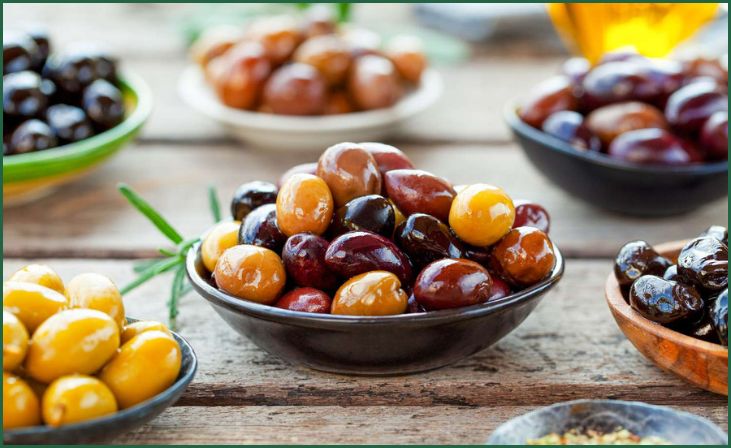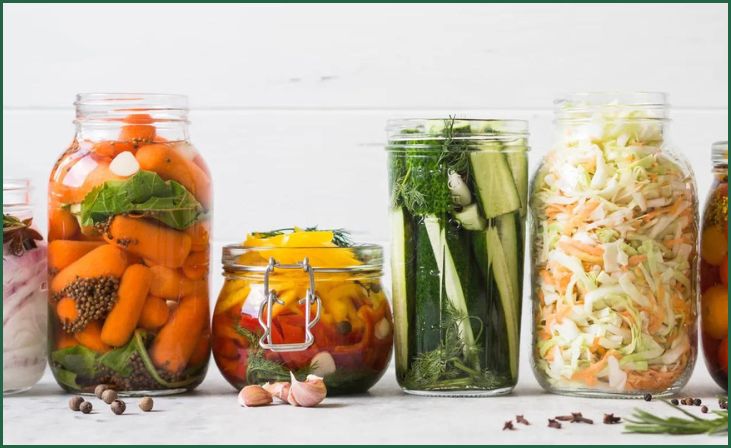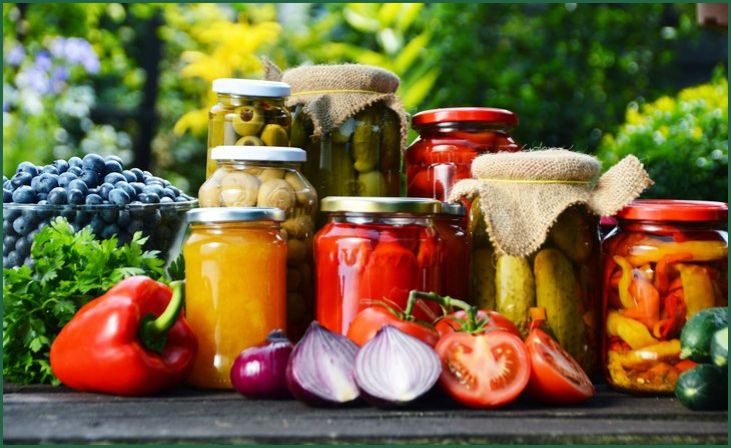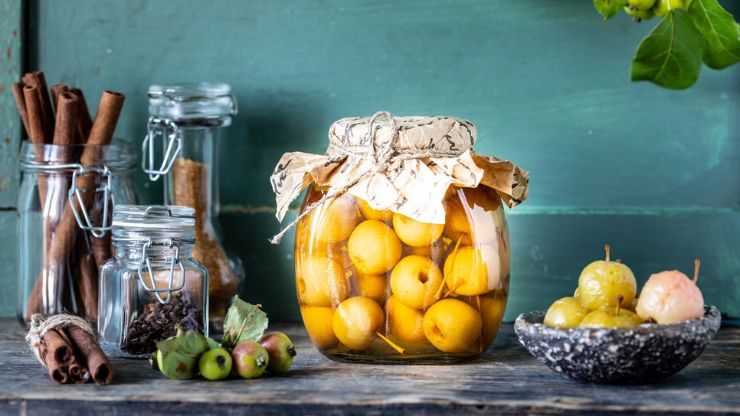Why Serve Fermented Foods at Thanksgiving? – Welcome to a Thanksgiving like no other! As you prepare to indulge in a feast of gratitude, consider elevating your table with the unique addition of fermented foods. In this blog, we’ll explore 15 compelling reasons why incorporating fermented delights into your Thanksgiving spread will not only tantalize your taste buds but also contribute to a healthier and more vibrant celebration.
Table of Contents
ToggleWhy Serve Fermented Foods at Thanksgiving
Rich Flavor Profiles

Incorporating fermented foods into your Thanksgiving feast is like adding a symphony of rich and complex flavors to your culinary composition. The natural fermentation process serves as the maestro, orchestrating a delightful combination of tanginess and depth that can elevate traditional dishes to new heights. From the crisp tang of sauerkraut to the lively zest of kimchi, each fermented delight adds a unique and unforgettable dimension to your holiday spread, transforming it into a gastronomic masterpiece. This is the first reason on our list 15 reasons on Why Serve Fermented Foods at Thanksgiving.
Also Read: Fermented Celeriac Crisps
Gut Health Benefits
Beyond the pleasure of taste, serving fermented foods at Thanksgiving brings a harvest of health benefits, particularly for your gut. These foods are powerhouses of probiotics, the friendly bacteria that dance through your gut microbiome, promoting balance and vitality. A well-balanced gut not only enhances digestion but also facilitates nutrient absorption, contributing to overall well-being. So, as you indulge in the flavors of fermented treats, you’re not just savoring the moment; you’re nurturing your body from the inside out. This is the second reason on our list 15 reasons on Why Serve Fermented Foods at Thanksgiving.
Digestive Aid
As Thanksgiving beckons indulgent feasting, the presence of fermented foods becomes a digestive ally. The enzymes crafted during the fermentation process play the role of culinary superheroes, breaking down complex compounds and making it easier for your body to process and absorb nutrients. Including fermented foods on your holiday table becomes a thoughtful strategy to support digestive health amid the abundance of festive delights, ensuring a harmonious post-feast experience. This is the third reason on our list 15 reasons on Why Serve Fermented Foods at Thanksgiving.
Variety of Options
The beauty of serving fermented foods lies in the vast symphony of options available. From the crisp crunch of pickled vegetables to the creamy complexity of fermented cheeses and the effervescent charm of beverages like kombucha, you have the creative reins to tailor your selections. This variety ensures there’s something for everyone at the Thanksgiving table, adding an inclusive and dynamic aspect to your culinary offerings that transcends the ordinary. This is the fourth reason on our list 15 reasons on Why Serve Fermented Foods at Thanksgiving.
Enhanced Nutrient Content
Fermented foods not only tantalize the taste buds but also boast an enhanced nutrient profile compared to their non-fermented counterparts. The fermentation process acts as a culinary alchemist, increasing the availability of certain vitamins and minerals. By including these nutritionally dense delights in your Thanksgiving spread, you’re not just crafting a delicious meal; you’re infusing it with an extra dose of healthful goodness. This is the fifth reason on our list 15 reasons on Why Serve Fermented Foods at Thanksgiving.
Preservation of Seasonal Produce
As Thanksgiving celebrates the harvest season, fermenting foods becomes a preservation art form, capturing the essence of fresh produce. Creating homemade pickles or crafting fermented relishes allows you to extend the enjoyment of peak-season vegetables throughout the colder months, bringing a touch of summer to your Thanksgiving table and connecting your feast to the cycle of nature. This is the sixth reason on our list 15 reasons on Why Serve Fermented Foods at Thanksgiving.
Also Read:- How To Start With Fermented Foods
Culinary Creativity
Serving fermented foods is an open invitation to showcase your culinary creativity. Experimenting with different fermentation techniques, exploring diverse flavors, and crafting unique combinations allow you to become the architect of personalized additions to your Thanksgiving menu. Your guests will not only enjoy the flavors but also appreciate the effort and innovation, making the holiday meal a canvas of creative expression.
Alleviates Cooking Stress
Navigating the whirlwind of Thanksgiving preparation becomes more manageable with the addition of fermented foods to your menu. Many fermented items can be prepared in advance, offering you a strategic culinary advantage. This convenience, combined with the explosion of flavors, ensures that as you navigate the holiday hustle, the stress in the kitchen takes a back seat to the joy of crafting a memorable and flavorful feast.
Don't just scroll, subscribe!
BuzzTrail's unique web-stories are the cure for boredom you've been waiting for.
Probiotic Desserts

The journey of fermentation doesn’t end with savory dishes—it extends to the realm of probiotic desserts for a sweet finale to your Thanksgiving feast. Indulge in yogurt-based treats, savor kefir ice cream, or relish fermented fruit compotes as the perfect conclusion to your festive meal. With these desserts, you not only embrace the decadence of the season but also incorporate the health benefits of fermented delights into every sweet bite.
Balanced Acidity
Fermented foods contribute a harmonious acidity to your Thanksgiving spread, acting as a culinary counterpoint that cuts through the richness of traditional dishes. Whether it’s a subtle hint of acidity from pickled beets or the bold tang of fermented hot sauce, this balance enhances the overall dining experience. Your guests will be left not only satisfied but also refreshed by the thoughtful contrast of flavors on their palates.
Immune System Support
As the colder months approach, having immune-boosting elements on your Thanksgiving table becomes a proactive measure for the health of your loved ones. Many fermented foods contain bioactive compounds that may contribute to a strengthened immune system. Thus, as you gather for Thanksgiving, you’re not only enjoying a feast but also fortifying your body against seasonal challenges.
Cultural Fusion
Embrace a multicultural Thanksgiving by incorporating fermented foods from various culinary traditions. Experiment with the fiery kick of Korean kimchi, the comforting tang of German sauerkraut, or the umami richness of Japanese miso. In doing so, you not only create a fusion feast that celebrates diversity but also add an international flair to your holiday gathering, making it a global gastronomic experience.
Eco-Friendly Choices
Choosing fermented foods aligns with eco-friendly practices, contributing to a more sustainable Thanksgiving celebration. The fermentation process itself requires less energy compared to other preservation methods, showcasing a commitment to environmental responsibility. By opting for foods that taste good and reflect a consciousness of the planet, you’re reducing your carbon footprint and making a positive impact on the environment.
Unique Appetizers
Elevate your Thanksgiving gathering by impressing your guests with unique and flavorful fermented appetizers. Fermented dips, spreads, and salsas can serve as tantalizing preludes to the main feast, stimulating the palate and setting the stage for a culinary experience that goes beyond the ordinary. These appetizers become not just starters but the opening notes of a symphony of flavors that unfold throughout the holiday meal.
Also Read:- Kombucha-Fermented Beef Jerky
Contribution to Culinary Tradition

Incorporating fermented foods into your Thanksgiving celebration is more than just a culinary choice; it’s a contribution to the evolving tapestry of gastronomic tradition. As food trends shift and evolve, introducing fermented elements to your holiday table becomes a statement of modernity. It reflects an awareness of the dynamic nature of gastronomy and invites you to join the movement, making your
Thanksgiving memorable with the timeless touch of fermentation. In doing so, you become a steward of culinary evolution, weaving innovation into the fabric of tradition for a Thanksgiving feast that transcends the ordinary. This is the last reason on our list 15 reasons on Why Serve Fermented Foods at Thanksgiving.
Conclusion
As you plan your Thanksgiving celebration, consider venturing beyond the traditional and embrace the world of fermented foods. The 15 reasons explored in this blog highlight the myriad ways these culinary delights can contribute to a more flavorful, wholesome, and unforgettable holiday gathering. Cheers to a Thanksgiving feast that not only nourishes the body but also delights the senses!
FAQs
Title for This Block
Title for This Block
Description for this block. Use this space for describing your block. Any text will do. Description for this block. You can use this space for describing your block.
Title for This Block
Title for This Block
Description for this block. Use this space for describing your block. Any text will do. Description for this block. You can use this space for describing your block.

